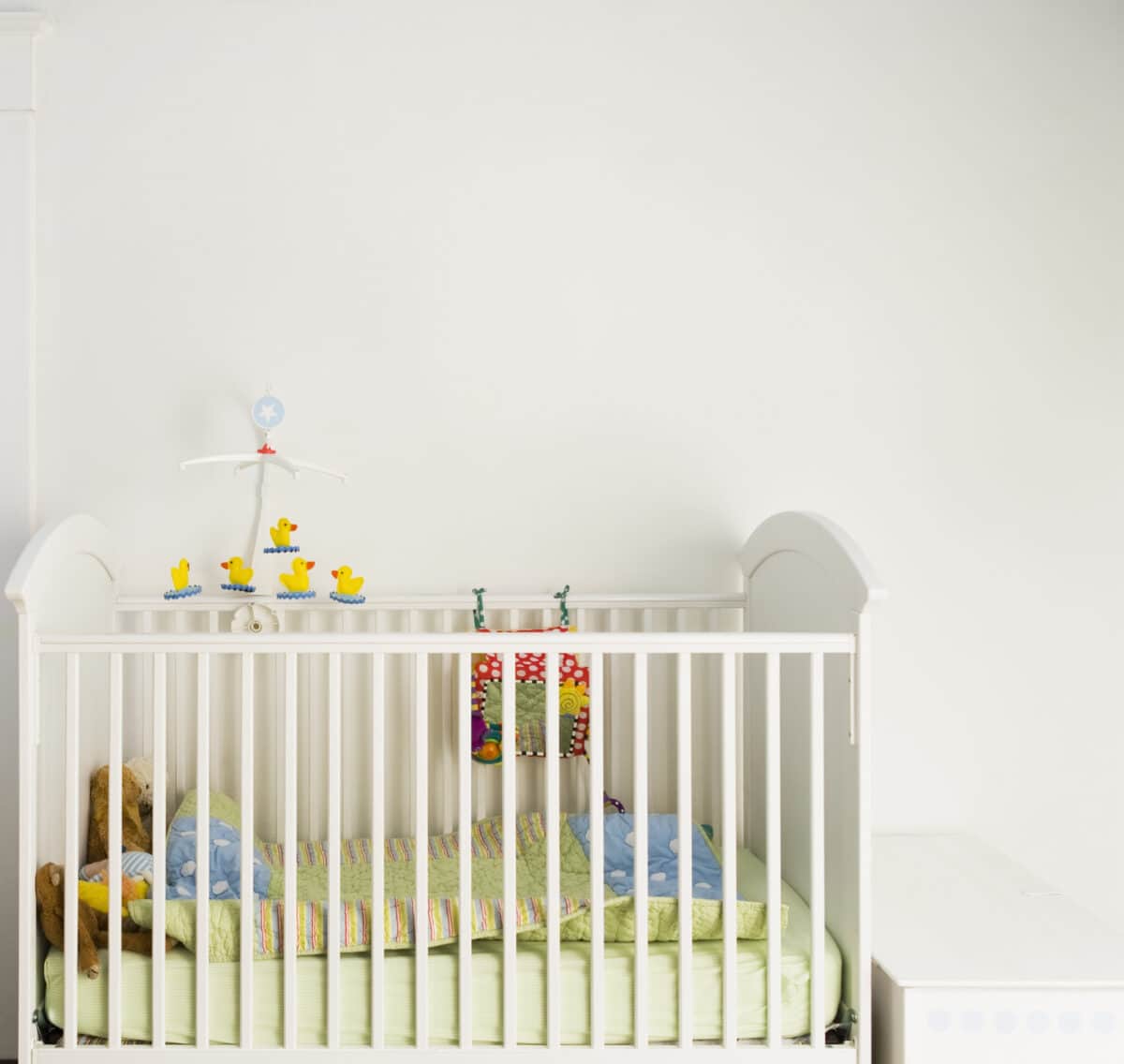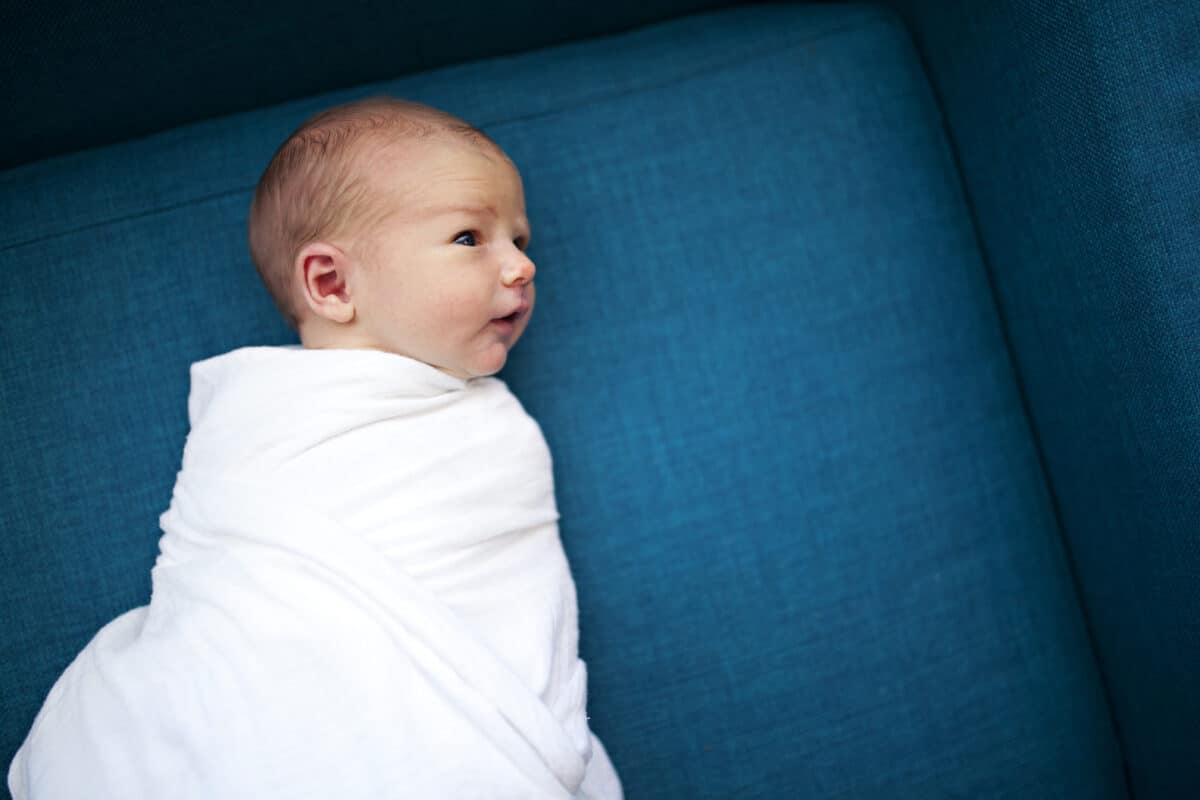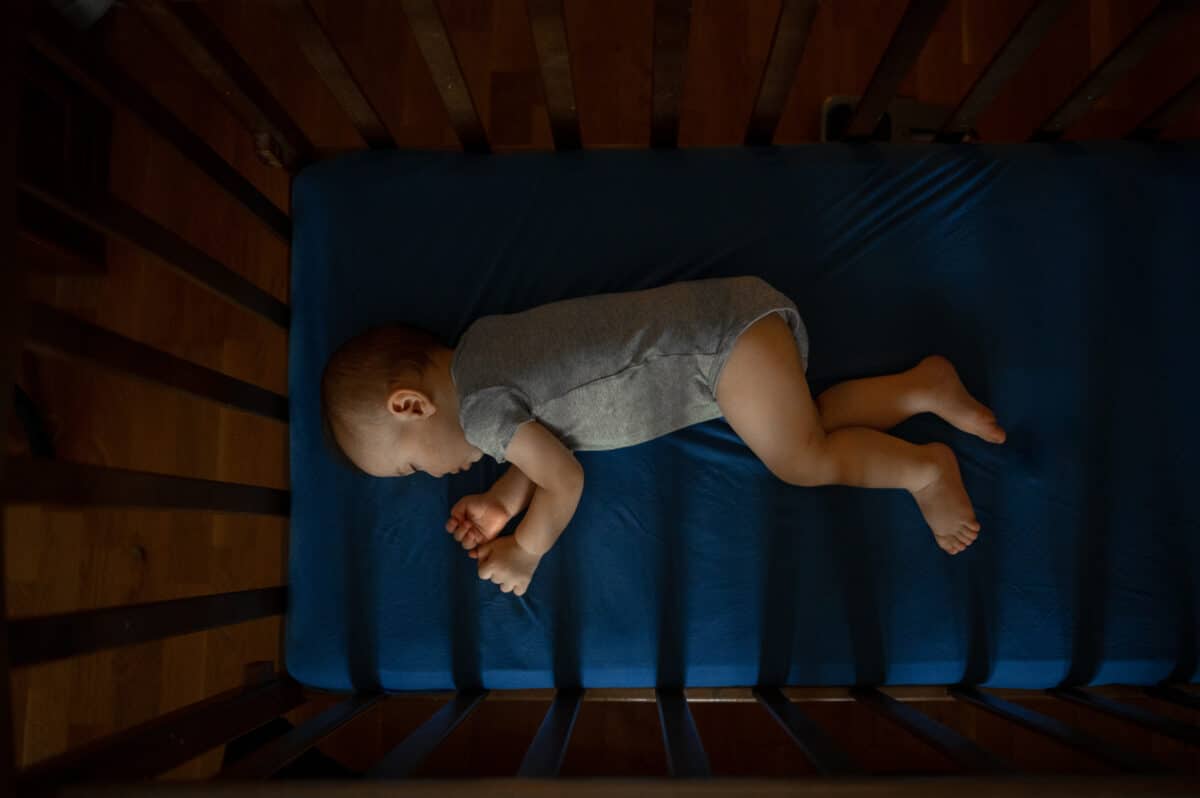Sleep Training 101

Do you long for a “silent night”?
Use these sleep training tips to help the whole family sleep tight.
As a new parent, your life will revolve around three things: feeding your baby, changing diapers, and getting them to actually sleep!
There are lots of doctors, bloggers, and experts, each with their own sleep training methods, many of which contradict each other.
In this article, we’ll cut through the noise to give you some basic sleep training tips you can use to help your baby (and you!) get more sleep.
1. Let Them Sleep!
It sounds obvious—of course, you’re going to let your baby sleep! But if you’re a first-time parent, you might not be aware of how active babies are in their sleep.
It’s not uncommon for a baby to move around, make noise, etc. while being completely asleep. If you run to pick them up at every peep, whine, and whimper, your baby is going to wake up from what was a very comfortable sleep.
Instead, practice “the pause.”
It’s simple: just wait to see if your newborn goes back to sleep or opens their eyes and starts bawling for milk.
As the old saying goes: “sleep begets sleep.” The more sleep your baby gets during the day, the easier they will be able to fall asleep at night. (The same goes for those overtired, cranky toddlers!)
2. Swaddle
Newborns have a startle reflex that can sometimes be enough to wake them up. While this reflex is very useful for primates who cling onto their mothers all day, it’s less convenient when you want your baby to sleep in a crib.
Luckily, you can stifle that startle with a swaddle.
To get a good swaddle, put down those flannel receiving blankets. They’re not large enough and tend to be too warm. Instead, opt for a breathable muslin swaddling blanket that can be folded into multiple configurations.
However, stop swaddling once your baby can roll over on their own. By this point, the startle reflex will have subsided and swaddling will only put your baby at risk for suffocation.
3. Start Early
Many parents wait until their baby is a year old before they begin sleep training. Unfortunately, they tend to learn the hard way that sleep training is much easier the earlier you begin.
When a 3-month-old cries in their crib after you put them down for the night, they are likely crying because they are exhausted and/or have just been put into an unfamiliar environment. That’s really all the reasoning they are capable of at this age.
But when a 1-year-old cries, it could be because they miss you, they’re no longer playing, they don’t know when you are going to come back…and because they’re exhausted! Of course there could be other reasons like symptoms of teething or sleep regressions, but for the most days it’s the former, not the latter.
What experts call “sleep training” is essentially just starting good sleep habits. By implementing these habits when your baby is about 3-4 months old, good sleep will be second nature to them.
4. Create a Soothing Bedtime Routine
You’ve probably heard many tips to help you sleep better at night: avoid caffeine, turn off screens an hour before bed, use lavender-scented room sprays, etc. As it turns out, babies are just as affected by their environment as adults!
Your baby can pick up on routines by as early as three months; following a predictable schedule will signal to their brains that it’s time for bed. And remember, limit screen time an hour or two before bed because screens emit blue light which can disturb natural sleep cycles.
Just be sure to save the cheerful energy for playtime. Reading, singing, and warm baths are better options.
The most important part of a good sleep routine? Consistency! In order for it to be a “routine,” it needs to be predictable from night to night. There’s no need to overcomplicate things—pick a schedule you know you can stick to.
5. Create a Cozy Environment
Putting your baby down for a nap in a room full of noise might have worked when they were a newborn, but by the time your baby is a few months old, they are much more observant to things around them.
After the bedtime routine, put your baby down for the night in a room that’s been set up for sleep success.
Keep the room temperature cool (between 68° and 72°F) and lights dim. If your baby’s bedtime is before sunset, some room darkening curtains will help create the perfect environment.
At this age, your baby does not need a night light. In fact, the extra light may keep them awake far longer than necessary. If you need to go into the room at night, try a motion sensor light, so it only comes on when you need it.
As always, practice safe sleeping habits, which means keeping your baby’s crib or bassinet free from toys, bumper pads, quilts, or loose blankets.
6. Know Your Sleep Training Methods
As we mentioned earlier, there are dozens of popular sleep methods and all of them have their own advantages and disadvantages.
- Cry It Out – With the Cry It Out method, you ensure that your baby’s physical needs are met (they’re warm, fed, and safe), then let them cry themselves to sleep. It sounds harsh, but it’s likely harder for you than it is for them.
- Ferber – If crying it out seems too extreme, the Ferber method involves letting your baby cry for a set amount of time, then coming in to console them without picking them up.
- Pick Up, Put Down – This is similar to the Ferber method, but allows you to pick your baby up to console them.
- Chair – If your baby is older (and cries because they miss you), sit next to their crib in a chair until they fall asleep and don’t engage with them, even if they get fussy. Each night, move the chair a little farther away until you’re out of the room.
- Fading – The Fading method is based on the idea that your child is fighting sleep because s/he simply isn’t tired. You can work with this by waiting until your child is very drowsy before putting them to bed. Once they have acclimated to this schedule, you can adjust their bedtime by 15 minutes each night until they are falling asleep on time.
Which sleep training method you choose will have a lot to do with your preferences, your baby’s personality, and the recommendation of your pediatrician.
Many parents find that a blend of sleep training methods works best for them.
7. Take a Step Back
Allow your baby to fall asleep on their own, without interference.
While it’s tempting to want to soothe their tears and soak up all those sweet baby cuddles, the main goal of sleep training is to remove the crutches and teach your baby how to fall asleep independently.
If you get into the habit of nursing, singing, or rocking them to sleep, they will expect the same treatment every time (or every time they wake up). Instead, try to put your baby down while they are drowsy, but still awake.
Eventually, they’ll figure out how to self-soothe every time.
Sleep Tight!
Very few parents look forward to the process of sleep training, but they all look forward to the results. Before you know it, quiet evenings and restful nights will be the norm.
Good sleep is not just important for parents but for your baby’s developing brain and body. If you’re struggling with sleep training or suspect that there is a medical reason for your child’s nighttime struggles, schedule an appointment with one of our friendly pediatricians. We’re happy to assist in any way we can.
Kid Care Pediatrics
Kid Care Pediatrics has been in existence since October 2001. It was established by Omar A. Gomez, M.D. The practice philosophy at Kid Care Pediatrics is to provide quality pediatric medical care for children in a professional yet caring manner.



